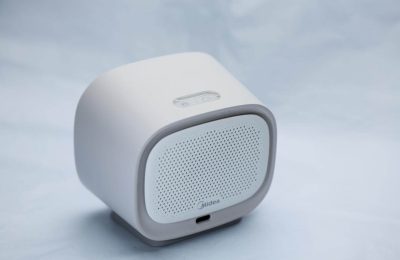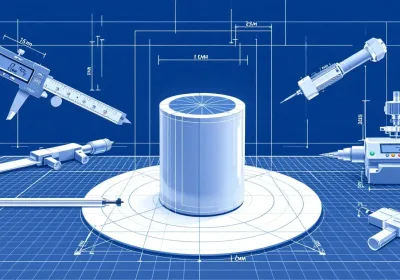What is a Prototype in Psychology?
When it comes to psychology, a prototype usually refers to the most typical or representative example within a category. In fact, it’s often the very image that first comes to mind when you hear or think about a particular concept.
For instance, if someone mentions the word “bird,” the image that probably pops into your head is something like a robin or a sparrow, rather than a penguin or an ostrich. That immediate mental image serves as your prototype for the category “bird.”
Everyday Examples
- Fruit → apple or banana (instead of durian or dragon fruit)
- Vehicle → car (instead of a bulldozer or Segway)
- Furniture → couch (instead of a beanbag or hammock)
Why Prototypes Matter
Our brains rely on prototypes to speed up decision-making. By matching new information against a mental “best example” stored in memory, we’re able to quickly categorize things and respond more efficiently. This mental shortcut helps us save cognitive effort but sometimes can lead to mistakes—especially when the real world throws us less typical cases.
Origins and Development of Prototype Theory
The idea of Prototype Theory first took shape in the 1970s thanks to the pioneering work of psychologist Eleanor Rosch.
Her studies challenged the old belief that categories had clear-cut boundaries. Instead, she demonstrated that many categories are more “fuzzy,” with some members feeling more central or typical than others.
One key insight from Rosch’s work was that not all members of a category are created equal. For example, a robin feels more “bird-like” to most people than a penguin, even though both are birds.
Core Concepts in Prototype Theory

Typicality and Graded Membership
Typicality is all about how closely an item resembles the prototype. Items that rate high in typicality are recognized and classified faster than those considered atypical.
- High typicality: apple → fruit
- Low typicality: coconut → fruit
Central vs. Peripheral Category Members
Central members represent the “best examples” of a category (like a robin for birds). Peripheral members are less typical (like an ostrich for birds).
Mental Representations and Cognitive Economy
Our minds store prototypes as a way to streamline thinking. Instead of memorizing every example, having a single prototype lets us efficiently categorize many similar items.
Prototype Theory vs. Exemplar Theory
Key Differences
- Prototype Theory: Suggests we store one best example for each category.
- Exemplar Theory: Proposes we keep many examples and compare new items to all of them.
Comparative Table
| Feature | Prototype Theory | Exemplar Theory |
|---|---|---|
| Storage | One central example | Many specific examples |
| Processing Speed | Faster | Slower |
| Flexibility | Less flexible | More flexible |
When Each Theory Applies
Prototype theory works well in everyday situations where quick categorization suffices. Exemplar theory is handy when accuracy is crucial—like identifying a rare bird species.
Experimental Evidence

Rosch’s Typicality Experiments
In her experiments, Rosch asked people to rate how typical various items were of a category. The results showed clear hierarchies, with some members consistently rated as more representative.
Language and Perception Studies
Other research supports that people name and remember typical items faster than less typical ones.
Applications in AI and Machine Learning
Prototype-based classification methods are used in computer vision, where new images are compared to an “average” stored example.
Applications in Psychology and Beyond

Language Acquisition
Children often learn the typical members of categories first—for example, they learn the word “dog” before “wolf.”
Visual Perception and Object Recognition
Prototypes help us identify objects quickly, even under challenging conditions like poor lighting or unusual perspectives.
Social Categorization and Stereotyping
In social psychology, prototypes explain how stereotypes form—people generalize based on a “typical” member of a group.
Criticisms and Limitations

Cultural Bias in Prototypes
What counts as a typical example can vary greatly across cultures. For instance, a typical breakfast food in the United States might be pancakes, whereas in Japan it might be miso soup.
Ambiguity in Category Boundaries
Sometimes, it’s hard to say whether an item fits a category at all, which challenges the usefulness of prototypes.
Summary Table: Prototype Theory at a Glance
| Aspect | Details |
|---|---|
| Definition | Most typical example of a category |
| Founder | Eleanor Rosch (1970s) |
| Key Concepts | Typicality, central members |
| Applications | Language, perception, AI |
| Limitations | Cultural bias, fuzzy boundaries |
FAQ: Prototype Psychology

What is an example of a prototype in psychology?
A robin is a classic prototype for the category “bird.”
How does prototype theory differ from exemplar theory?
Prototype theory relies on a single best example; exemplar theory stores many examples.
Who introduced the prototype concept in psychology?
Psychologist Eleanor Rosch introduced it in the 1970s.
Why are prototypes important in categorization?
They help the brain categorize quickly and efficiently, though sometimes at the cost of accuracy.
References
- Rosch, E. (1973). Natural categories. Cognitive Psychology, 4(3), 328–350.
- American Psychological Association. (n.d.). Prototype. APA Dictionary of Psychology.
- Murphy, G. L. (2002). The Big Book of Concepts. MIT Press.
 LKprototype
LKprototype





